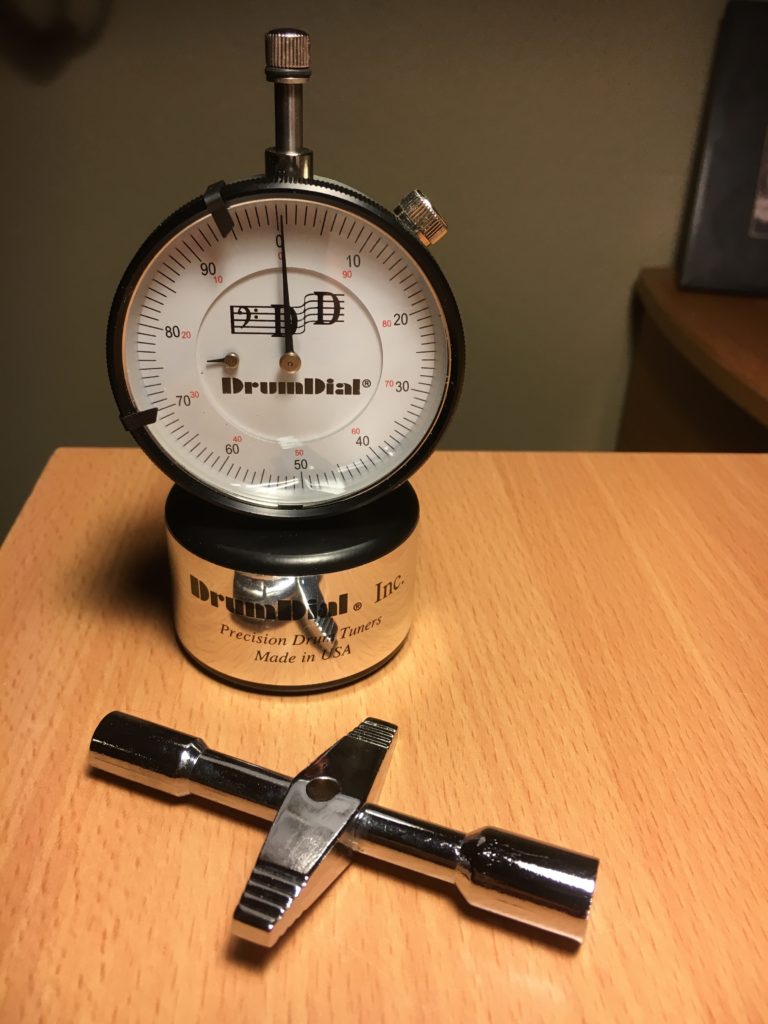What is a drum dial and how can you use it to set up your banjo head correctly?
Fretmentor student, Justin Lambert, explains the process of tuning your banjo head with a Drum Dial, in today’s guest blog.
Drum Dial & The Banjo
Tuning the head on a banjo is quite simple with the use of a “drum dial”. I bought mine online, though you can check your local drum shop. Your banjo head should be tuned to G#, this will help your banjo ring and have good sustain in each note. First, tune your banjo as close as you can to open “G” tuning and move the bridge to set the intonation. You can chime the #1 string at the 12th fret to see how close your intonation is to true. If your banjo is in tune when “open, or unfretted”, yet sharp when fretting at the 12th fret, you need to move the bridge towards the tailpiece. Move the bridge towards the neck if you are flat when fretting at the 12th fret. Once you have this accomplished, you can begin to tune your banjo head.
Tuning the Banjo Head
First, you need to calibrate your drum dial by placing it on a piece of glass and setting the needle to “0”.
Second, remove the resonator from your banjo by loosening the 4 caps or screws holding the resonator to the flange. Place your banjo on a towel or stand lying flat and place the drum dial about 1 inch from the edge. As you move the drum dial around your banjo head next to each hook, you might notice the dial registers 89, or 92. The number is not important, you just want the number to be the same at each “hook” all the way around the head. Go ahead and tighten, or loosen each hook working on opposing hooks all the way around the banjo. Do not work around the head in order, you will never get the numbers to be the same and most likely will damage the head. Tighten hook 1, then 12, then 6, then 18, then 3, then 15, etc. until you have the same number all the way around. Inevitably some hooks will be loose from tightening others, just snug these and keep moving around until they are all snug and you have the same number on the drum dial all the way around your banjo.
Third, you will have to retune your banjo and possibly adjust the bridge ever so slightly. You should definitely notice your banjo “ring”, especially when hitting the first string. If it isn’t ringing just yet, you can go back and slightly tighten each hook (paying attention to your drum dial numbers, and the hooks closest to the tailpiece).
Fourth, replace the resonator and then play your banjo, you should notice a difference in both the sound quality and sustain. I recommend checking the head with the drum dial again within the next few days to weeks as some settling in will occur. Simply follow the above steps to get your banjo ringing and sounding great.
About today’s author: Justin Lambert is a ceramic artist specializing in one of a kind wood fired functional pottery made and fired at his home studio in Jupiter Farms, Florida. He has wanted to learn banjo for many years, having played some piano as a child, and alto saxophone seriously as a teenager for many years. He is a current Fretmentor banjo student.


